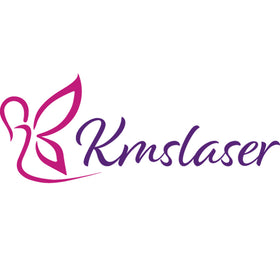Can Pressotherapy Reduce Cellulite?
Understanding the Structure of Cellulite
Cellulite is not just fat—it’s a complex condition involving fat deposits, fibrous connective tissue, fluid retention, and poor circulation. The dimpled “orange peel” appearance occurs when fat pushes up against the skin while fibrous bands pull it down, creating uneven texture. To reduce cellulite, a successful approach must go beyond fat burning. It must also address lymphatic drainage, tissue oxygenation, and collagen stimulation. This is where pressotherapy plays a key role—by reducing fluid buildup, improving circulation, and mechanically stimulating skin tissues.
| Cellulite Factor | Underlying Cause | Pressotherapy Impact |
|---|---|---|
| Fluid retention | Lymphatic stagnation | Stimulates drainage and detox |
| Poor circulation | Reduced oxygen and nutrients | Improves blood and lymph flow |
| Connective tissue stiffness | Lack of movement and massage | Provides mechanical stimulation |
How Pressotherapy Improves Skin Texture
Pressotherapy delivers rhythmic air pressure through a multi-zone suit that compresses the legs, hips, and abdomen. This consistent movement breaks up congestion, increases interstitial fluid exchange, and gently stretches skin tissues—improving elasticity and tone over time. The result? Smoother, tighter skin with reduced dimpling. While it doesn’t "eliminate" cellulite completely, it significantly improves its visibility—especially when combined with healthy habits, hydration, and other aesthetic treatments like cavitation or radiofrequency.
| Visible Improvement | Expected Timeframe | Client Feedback |
|---|---|---|
| Smoother thighs | 4–6 sessions | “My legs feel lighter and tighter” |
| Reduced puffiness | 2–3 sessions | “I can see the swelling going down” |
| Less visible cellulite | 8–10 sessions | “My skin looks firmer overall” |
Who Should Use Pressotherapy for Cellulite Reduction?
Pressotherapy is best for clients in early to moderate stages of cellulite who also experience bloating, water retention, or leg heaviness. It is especially effective for people with sedentary jobs, hormonal swelling, or post-diet rebound volume. However, it’s not ideal for clients with advanced fibrous cellulite without combining with other tools. Clients with regular exercise routines and low-sodium diets will see the fastest results. Pressotherapy is also a smart pre-treatment or maintenance protocol after intensive body contouring plans.
| Client Profile | Cellulite Type | Recommendation |
|---|---|---|
| Young women with fluid retention | Edematous cellulite | Excellent candidate for drainage sessions |
| Office workers with poor circulation | Mild to moderate mixed cellulite | Recommended with EMS or cavitation combo |
| Clients post-weight loss | Loose skin + surface cellulite | Use for skin tightening maintenance |
Frequently Asked Questions (FAQ)
Q: Can pressotherapy eliminate cellulite completely?
A: No, but it can significantly reduce its appearance by improving drainage and skin tone.
Q: How many sessions are needed for cellulite improvement?
A: Most clients see changes after 4–6 sessions, with optimal results after 10–12.
Q: Is it painful?
A: Not at all. It feels like a rhythmic, deep-pressure massage and is very relaxing.
Q: Can it replace cavitation or RF?
A: It’s best used in combination with other body shaping tools for maximal effect.
Q: Where can I buy a cellulite-focused device?
A: View our 16-airbag lymphatic & fat-loss model here: pressotherapy machine by KMSLASER.
Conclusion: A Powerful Ally for Smoother Skin
While no treatment erases cellulite completely, pressotherapy is a clinically supportive, non-invasive, and highly effective tool to reduce puffiness, boost tissue oxygenation, and visibly smooth the skin—making it a must-have in any modern body care menu.
📞 Need help adding anti-cellulite programs to your clinic?
Email sophia@kmslaser.com or WhatsApp: +86 18676839070





